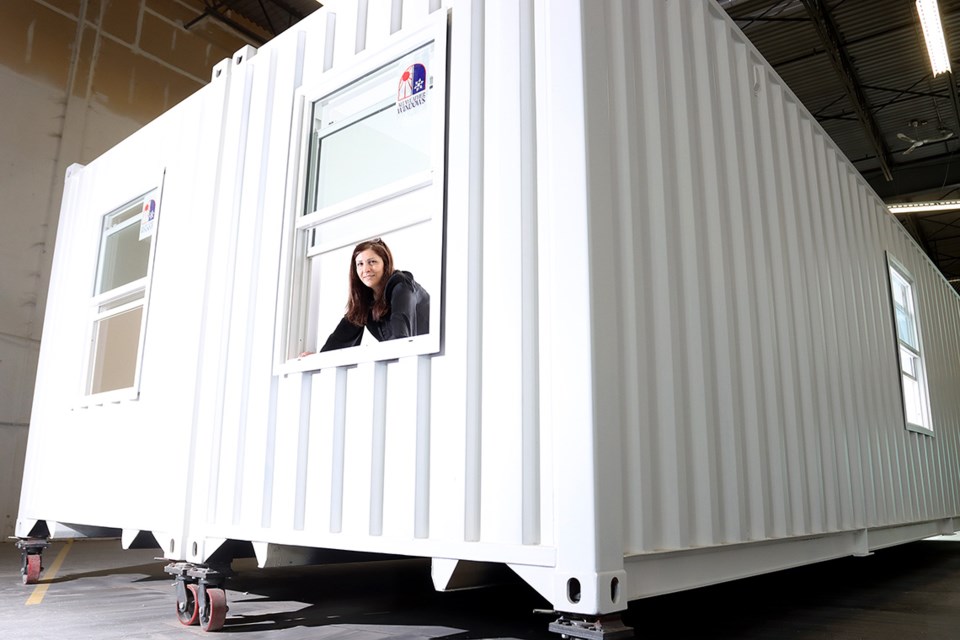A possible solution to sa国际传媒's housing crisis is being welded together in a Coquitlam warehouse.
Architect Homeira Raviz was designing luxury hotels and homes in her native Iran before immigrating to sa国际传媒 in 2009.
While driving to West Vancouver to help a client with a renovation project, she passed several homeless encampments and thought there must be a better way to be able to provide shelter for anyone who needs it.
"A home is the basic right that everybody has to have," Raviz said. "It doesn't matter if it's a metal box; if it's a clean living space you’re going to be okay."
In 2019, Raviz expanded on just that idea. to design, engineer and manufacture prefabricated homes out of shipping containers.
It took Raviz and her team of architects, engineers and tradespeople three years to put together a prototype and obtain certification from the Canadian Standards Association (CSA) as well as exceed expectations of the BC Building Code and the National Building Code of sa国际传媒.
Now she has to convince politicians, builders and entrepreneurs the 40-foot long homes are a viable housing option that could solve a lot of problems, such as providing shelter to the homeless or people displaced by disaster, residents of remote First Nations communities and camps for natural resource workers and even living quarters for hotel and restaurant staff in resort towns like Whistler and Tofino.
The possibilities are endless, Raviz said, and cost about one-fifth of building conventional wood-frame housing.
Starting with a brand new or barely-used nine-foot high corrugated steel container that would otherwise be used to transport bananas or appliances across oceans, along railway tracks and hitched to trucks, Raviz and a team of about 60 contracted tradespeople including welders, electricians, plumbers, dry wallers and window installers take up to 12 weeks to build a home.
A single container becomes a 320 sq. ft. studio apartment with one full bathroom, a kitchen and space for a washer and dryer.
Put two containers together and you've got a 640 sq. ft. two-bedroom apartment. Align three side-by-side for a four-bedroom home and so on.
Each container is fully modular with its own electrical work so they can be transported individually and attached on site. All that's needed once a container home arrives is a foundation upon which it can be placed and hookups for services like water, sewer or septic and electricity.
The idea is almost elegant in its simplicity, Raviz said, and versatile in its execution. The steel exterior is durable and fire resistant.
"It doesn't shrink, there's no rot, no mould and no sagging," she said.
The insulation that's installed behind the drywall inside and beneath the laminate flooring provides comfort in temperatures as low as -40°C.
Doors and windows are cut to a standard width, so if an owner wants to expand their home by adding another container, a window space can be extended to become a doorway.
Raviz said the homes' origin as a shipping container means they can be moved anywhere easily and relatively inexpensively over land or water, making them a natural housing solution for remote communities. In urban areas, they could be deployed for commercial, industrial and institutional applications like student or transitional housing or temporary quarters for workers.
Raviz said she's had inquiries from resort owners looking to accommodate employees or guests. Another is looking to use container homes as AirBNB apartments.
And while politicians from all three levels of government have expressed support when visiting the company’s warehouse in the shadows of the Port Mann Bridge, Raviz said they're still hesitant to commit. She thinks it might be because of a perception that providing homes for people in shipping containers might imply they’re being warehoused.
But, Raviz said, "this is exactly what we need."

